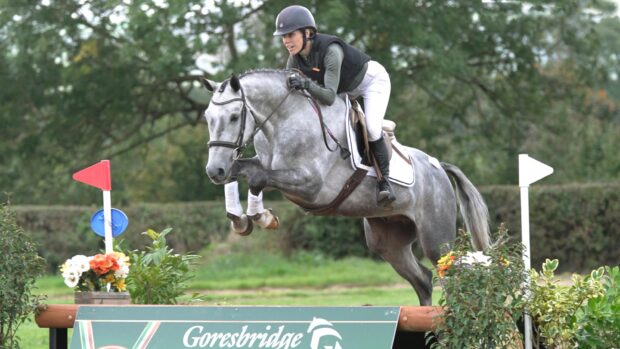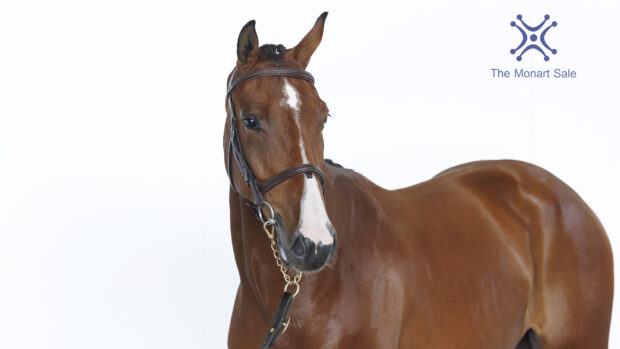If you’re on the hunt for new star for the show ring, then this guide on how to buy a riding horse is a good place to start.
What is a riding horse?
A riding horse is often defined as a type of show horse that fits between a hunter and a hack.
Riding horses fit into two height classes, large and small.
- Small riding horse — mare or gelding, four years old or over, exceeding 148cm and not exceeding 158cm
- Large riding horse — mare or gelding, four years old or over, exceeding 158cm
According to the British Show Horse Association (BSHA) the riding horse should have quality, substance, good bone, correct conformation, presence and true action.
There are riding horse classes held at most shows across the country. The two most prestigious riding horse titles to win are the riding horse of the year championship at Horse of the Year Show (HOYS) and the riding horse supreme at the Royal International (RIHS). At unaffiliated shows, large and small riding horses may be shown together in a single class.
During the class, riding horses perform on the go-round before they are assessed by a ride judge and a conformation judge.
Turnout wise, riding horses are shown trimmed with a plaited mane. Riding horses are shown with a coloured browband and the rider should wear a tweed jacket. Spurs should be worn by adults.
What should I look for in a riding horse?
Riding horses are the type between a hack and a hunter. Vicky Smith is a leading show horse producer from Cheshire. She has ridden multiple top riding horses, including the 2023 Royal Windsor and Great Yorkshire champion Royal Illusion.
She says that if you’re looking at a young prospect, you need to be mindful about its height.
“Always be aware of the height restrictions on each of the classes,” Vicky says. “Look at a horse and ask yourself what class it will fit in. These days, a lot of people buy unseen. There is always a risk, especially if you’re buying a youngster, say a three-year-old, that it will be too big for the small class, but too small for the large class.
“In terms of movement, a riding horse needs three really quality paces. They have to move well in trot but be comfortable in the canter when the ride judge gets on. Ultimately, they are going to be judged heavily on their ride once they get into the ring. They should be forward, and cover the ground, but also be mannerly and balanced.
“Type wise, I like a riding horse with good, flat bone, but with plenty of limb and substance. They need a substantial body and be in proportion. A small should be compact and butty with good depth, and a large can be a scopier in body. Riding horses do bridge the gap between a hack and a hunter, which is arguably why there is so much variation in type, probably the biggest you will see across the show horse classes.”
What else can I do with a riding horse?
Many riding horse types can do other jobs. The type of horse that fits into the riding horse category is likely to be scopey and athletic, but also substantial enough to jump, hunt or be a versatile all-rounder. Their movement might also make them a good choice for the dressage arena.
“A riding horse is the ideal type for an amateur who wants to do a bit of everything,” Vicky says. “As well as disciplines outside of showing, they can contend other showing classes, too, such as working show horse classes and intermediates if the rider is of the correct age.
“There are so many opportunities out there; from the new classes at London International, to the Search For A Star finals held at HOYS. If I were a young amateur looking to get into showing but also hoping to do other things, a small riding horse would be my first choice. They’re not as heavy and big as a hunter, but they’re usually not too fine for activities such as jumping and hunting.”
Where should I buy a riding horse from?
Riding horses for sale will be advertised at various times in the season on online platforms, including with Horse & Hound, powered by Whickr.
“It’s worth looking at online sites, but also asking professionals who produce riding horses,” Vicky says. “Riding horses are a type you can also stumble across by chance on all-rounder for sale pages. You can see low level all-rounders that, with a bit of fine tuning, could turn into good riding horses. The type isn’t quite as specific as a hack or a hunter, so they can be discovered if you have the right eye for one and have the confidence to take a chance on it.”
How do I know if the horse is for me?
Ultimately, only you know which horse is the right fit for you, and you should ask yourself a few questions before you agree on a sale. It is strongly advised that you go and view a horse prior to buying it. If the horse is broken in, you should ride the horse, ask to hack it out and see it in various situations, if possible.
If you are looking to keep the horse at home instead of on a production yard, you will need to figure out if it will fit into your routine. Show horses are athletes, many requiring careful training and production to ensure they perform at their best in the ring.
How much should I pay for a riding horse?
As Vicky suggests, as riding horse types can sometimes be advertised under a different guise, you might be able to grab a bargain: “I’ve stumbled across nice horses that have never done anything in the show ring, but that are of a nice type and they’ve just never been considered as a show horse, for about the £5,000 mark. On the other hand, there are beautiful young riding horses of the future going for strong money; it depends if you can find that diamond in the rough.”
What happens when I’ve agreed to buy a riding horse?
When you have found the right horse for you, then it’s time to arrange a pre-purchase vetting, something that is strongly recommended.
The vet will assess the horse with the specific job you want it for in mind, so it’s important to let the vet know prior to the vetting that your main goal is to compete it in the show ring as a riding horse. As you want the horse for showing, the vet should pay close attention to any conformational faults which could impact its future career, even if they don’t impact soundness or performance. Show horses should be clean limbed and have no blemishes either.
“I would always recommend a vetting, for insurance purposes,” says Vicky. “But remember, horses look different on different days. A horse doesn’t have to be perfect, but it’s always good to get the vet to look so you’re aware of anything wrong. The main things to check are the heart and eyes, and I would always get X-rays to ensure the structure of the horse is correct and sound.”
For more information, you can read H&H’s ultimate guide to buying a horse.
- To stay up to date with all the breaking news from major shows throughout the year, subscribe to the Horse & Hound website
You may also be interested in:

Looking to buy a show hunter pony? Where to search and exactly what to look for

On the hunt for a Welsh section A pony? Then you need to read this first…

How can I buy my perfect Connemara pony?

How can I buy the perfect working hunter?

Subscribe to Horse & Hound magazine today – and enjoy unlimited website access all year round




